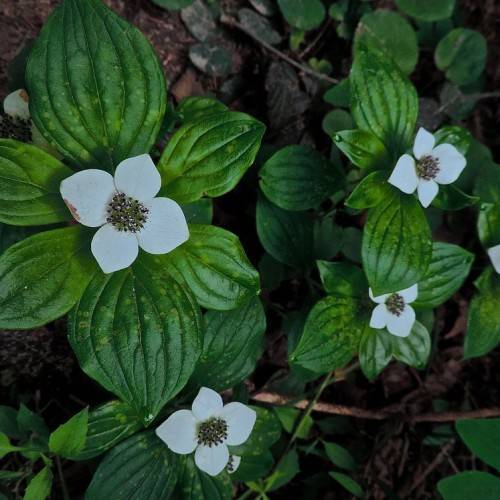
bunchberry
Cornus canadensis
Cycle:
Perennial
Watering:
Average
Hardiness Zone:
2 - 6
Flowers:
Flowers
Sun:
Part shade
Soil:
Sandy Loamy Humus Rocky
Fruits:
Fruits In Autumn Ready In Fall
Leaf:
Yes
Growth Rate:
Low
Maintenance:
Low
Care Level:
Easy
watering
The bunchberry (Cornus canadensis) is a hardy plant species, as it is capable of withstanding various forms of soil and differing amounts of light. It is important to water bunchberry plants regularly in order to ensure proper growth and development. Generally, bunchberry plants require about 1 to 1.5 inches of water weekly during the growing season. This can be provided either from rain or by watering with a sprinkler or hose. During drought periods, additional water may be needed to keep the plant healthy. When watering, be sure to soak the soil around the plant to provide moisture throughout the entire root system. After the soil is wet, let it dry out before watering again. Overwatering can cause the roots to rot.
sunlight
Bunchberry (Cornus canadensis) plants generally do best when given full to partial sun, both morning and evening sun. In heavily shaded areas, the plants may become leggy and the flowers may fail to bloom. The plant needs at least 4-6 hours of direct sun exposure each day, preferably morning sun and in cooler climates the plant may require some protection from the strong afternoon sun. Morning light is important to allow for the production of flowers and fruits. Bunchberry plants will usually get enough sun when planted in the shade of deciduous trees or near the edge of a wooded area.
pruning
Pruning of bunchberry (Cornus canadensis) should be done in late winter when the plant is dormant. Pruning should be minimal since this species is a low-lying ground-cover plant. Light pruning or rejuvenation pruning should be carried out if any leggy growth or old, woody stems are present. Pruning should involve cutting back any stems that jut out from the main mass of the plant. This will encourage the growth of new shoots and a denser growth habit overall. Avoid pruning too deeply as this may damage the plant’s root system.
